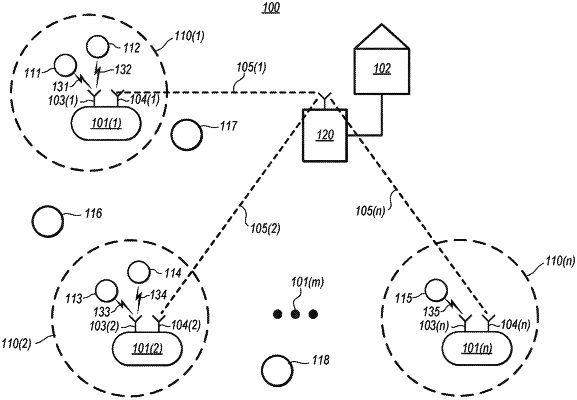| CPC H04W 4/90 (2018.02) [H04M 1/72418 (2021.01); H04M 1/72436 (2021.01); H04M 3/5116 (2013.01)] | 12 Claims |

|
1. An emergency communication hardware node comprising:
a long-range radio receiver configured to receive messages over a non-cellular long-range low-bandwidth radio channel that uses radio protocol that 1) has a maximum bitrate of less than one megabit per second, and a minimum bitrate of less than one kilobit per second, and 2) has a maximum line-of-sight range of over one mile;
a long-range radio transmitter configured to transmit messages over the non-cellular long-range low-bandwidth radio channel;
a wi-fi access point component configured to, when activated, enable a local wi-fi hotspot; and
an emergency response component configured to respond to an emergency message from an emergency communications center by 1) activating the wi-fi access point component, and 2) facilitating communication between a user device and the emergency communications center by facilitating at least one of outbound communication from the communication center to the user device and inbound communication from the user device to the communication center,
the emergency response component further configured to respond to the emergency message by facilitating both outbound communication from the emergency communications center to the user device and inbound communication from the user device to the communication center,
the emergency response component further configured to cause a captive portal to be rendered on the user device through which a user of the user device can receive rendering of messages that are communicated as an outbound communication from the emergency communication through the emergency communication hardware node to the user device, and configured such that the user of the user device can cause creation of messages that are communicated as an inbound communication from the user device through the emergency communication hardware node to the emergency communications center.
|